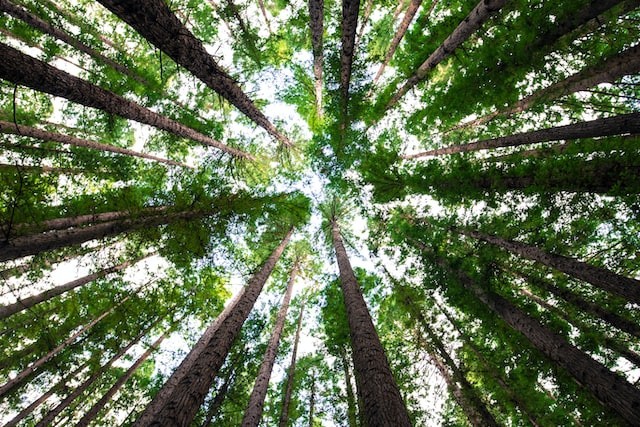Rwanda, as the first country, can now display a national inventory based on the mapping from each individual tree's carbon stock.
In cooperation with Rwandan authorities and researchers, researchers at the University of Copenhagen devised a method to accomplish this task.
Carbon stock of Rwandan trees as seen above

Current forest assessments are a source of uncertainty on a global scale. Mapping the carbon stock of all individual trees improves accuracy significantly, as per ScienceDaily.
The preservation of natural forests and the planting of new trees are recognized as essential paths to limiting climate change.
However, large uncertainties about the carbon content of trees have made assessing the efficacy of concrete initiatives difficult. This issue has been solved by researchers at the University of Copenhagen.
The new method makes use of databases that show the connection between the size of a tree's crown and its total carbon content.
Manually mapping the trees of an entire country would be a massive undertaking and prohibitively expensive.
New method represents a breakthrough because no other method could realistically provide comparable data at the level of the individual trees.
In addition time, the relatively small number of trees found in natural forests (11% of the total tree count) account for approximately 51% of Rwanda's national carbon stock.
This is possible primarily even though natural forests have an extremely high amount of carbon per tree volume due to the extremely low human disturbance guaranteed by national legislation.
A single very large tree will contain far more carbon than just a group of trees with the same joint crown extent.
In July 2022, nine researchers from the University of Copenhagen will visit Rwanda for field work as well as to present the results of the first nationwide mapping to Rwandan authorities and some other stakeholders in the country's forestry sector.
Furthermore, the method has been tested in a few other countries besides Rwanda. Tanzania, Burundi, Uganda, and Kenya are among these countries.
Carbon trapped to trees thickens leaves
Plant scientists have discovered that when carbon dioxide levels in the air rise, most plants are doing something unusual their leaves thicken, as per University of Washington.
And, because human activity is increasing atmospheric CO2 levels, thick-leafed plants tend to be in our future.
However, the implications of this physiological response on many plants extend far beyond larger leaves.
Underneath the high atmospheric carbon dioxide levels expected soon this century, the global carbon sink made a contribution by plants was less productive, leaving about 5.8 petagrams, or 6.39 billion tons, of carbon in the atmosphere per year.
These levels are comparable to the amount of carbon dioxide released into the environment each year due to human-caused fossil fuel emissions, which is 8 petagrams, or 8.8 billion tons.
Scientists are baffled as to why plants thicken their leaves as carbon dioxide levels in the atmosphere rise.
However, the response has indeed been documented in a wide range of plant species, including woody trees, staple crops like wheat, rice, and potatoes, and other plants which undergo C3 carbon fixation, the type of photosynthesis that is responsible for approximately 95 percent of photosynthetic activity on Earth.
Leaves could indeed thicken by up to a third, changing the surface area to mass ratio and altering plant activities such as photosynthesis, gas exchange, evaporative cooling, and sugar storage.
© 2025 NatureWorldNews.com All rights reserved. Do not reproduce without permission.





